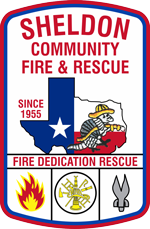High Rise Apartment and Condominium Fire Safety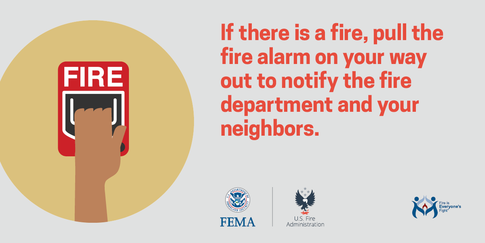
In November, USFA is sharing new social media cards and a downloadable and customizable infographic to remind people about fire safety in high rise apartments and condominiums. There are unique safety concerns for people living in these buildings.
In the first nine months of 2020, the U.S. media reported 204 fatalities in apartments and condominiums. While deaths in high rises are generally lower than single family homes, because high rises have a much greater use of fire protection systems; like sprinklers, there are precautions residents should take to be safer in their homes.
Cooking Safety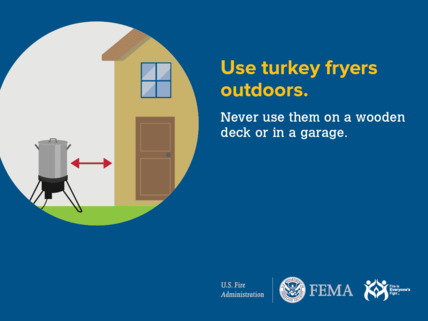
Most house fires are caused by cooking. It is the greatest cause of home fires and home fire injuries. It isn’t surprising that Thanksgiving is the peak day for home cooking fires.
Share these cooking tips with your community during November. While they plan their menus, they can also plan for fire safety.
- Stay in the kitchen when you are cooking at high temperatures.
- Stay home when cooking your turkey and check on it frequently. If you leave the kitchen, set a timer to remind you there is food simmering or baking.
- Keep children and pets away from the stove. They need to stay at least three feet away.
- Wear short or close-fitting sleeves while cooking on the stove.
- Keep pan/pot handles turned towards the back of the stove.
Many people like to fry their turkeys. There are several risks you should consider if you use a turkey fryer:
- Turkey fryers can easily tip over spilling hot oil across a large area.
- An overfilled cooking pot will cause oil to spill over when the turkey is placed inside. You can test the level of oil needed by filling the pot with water first and dipping the turkey inside to see how much the water rises.
- A partially frozen turkey will cause hot oil to splatter.
- Turkey fryers can easily overheat and start a fire.
- Even a small amount of cooking oil spilling on a hot burner can cause a large fire.
- Without thermostat controls, deep fryers can overheat oil to the point of starting a fire.
- The pot, lid and handles of a turkey fryer can get dangerously hot and cause burn injuries.
Consider using an electric turkey fryer. They take some of the risks out of cooking. But if you do deep-fry a turkey:
- Place the fryer outside, on a flat surface that can’t burn, such as cement.
- Place the fryer at least 10 feet from anything that can catch fire. This includes anything overheard like your house eaves or branches.
- Keep children and pets at least three feet from the fryer.
- Use a fryer with thermostat controls. Without these, the oil can heat to the point of catching fire.
- Thaw the turkey completely before cooking it so ice crystals won’t splatter the hot oil.
- Use potholders and oven mitts when handling the turkey.
There’s nothing more satisfying than cooking a good meal for the people we love. Make safety a priority in your kitchen, at Thanksgiving, and all year long.
Updated Publication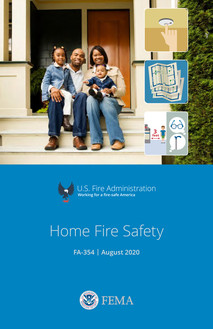
USFA has recently updated our Home Fire Safety brochure. You can order it through our Publications Center.
The brochure has a new feature. You can unfold it into a home escape plan graph. It has direction on how to create a home escape plan. Perfect for a family to use as they create and discuss their home fire escape plan with everyone in the home.
Fire is Everyone’s Fight
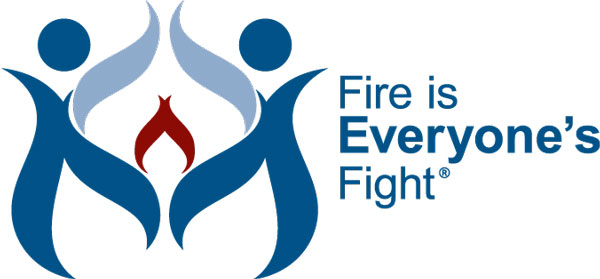
Each month we share the opportunity to join Fire is Everyone’s Fight® and ask you to share how you have used the logo.
Thank you West Bloomfield Fire Department for sharing your fire safety video. West Bloomfield has used Fire is Everyone’s Fight to unite their community around being safer in their homes and created several short videos providing fire safety tips.
Have you joined the fight?
If not, why not now? When you join, you are provided access to the logo, a community outreach guide and customizable PowerPoint presentations for you to use in your community.
Join with over 3,000 of your peers in changing the way people think about fire safety.
New CRR Self-study Course
NFA has released a new self-study CRR course. Introduction to Strategic Community Risk Reduction (CRR) empowers the learner with an understanding of what constitutes strategic CRR. Students explore the history and evolution of CRR from fire prevention into all-hazards risk reduction. In addition to identifying the core components that build an effective CRR strategy, students learn how the process can help foster safe, healthy, prepared and resilient communities. Learn more and register here.
